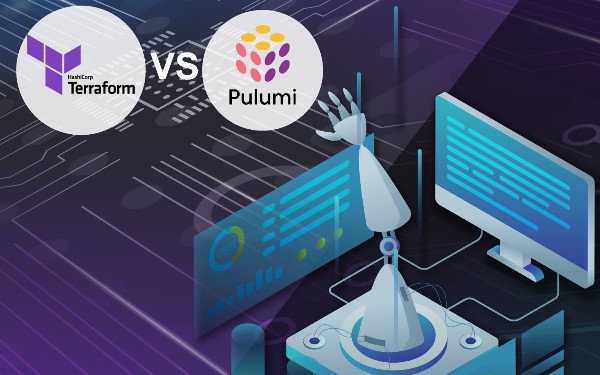 Functional Approach To String Manipulation in Java Functional Approach To String Manipulation in Java Dec 11th 2023, 19:38, by Sameer Shukla In the most recent updates to Java, the String class has undergone a series of significant method additions. Certain methods now yield instances of the Stream class, while some of them are Higher Order functions. The intention behind incorporating these methods is to offer a streamlined approach for handling strings in a stream-oriented manner. Handling strings in a stream-oriented manner brings the advantage of simplifying code and enhancing expressiveness. This makes it easier to apply operations like filtering, mapping, reduction, and more. |  Revolutionizing Network Operations With Automated Solutions: A Deep Dive Into ReactJS Revolutionizing Network Operations With Automated Solutions: A Deep Dive Into ReactJS Dec 11th 2023, 18:56, by Atul Naithani In the ever-evolving landscape of network operations, the integration of automation has become a game-changer. With the rapid advancement of technology, businesses are increasingly relying on automated solutions to streamline their network processes. ReactJS, a JavaScript library for building user interfaces, has emerged as a powerful tool in the realm of automated network operations. In this blog post, we will explore the role of ReactJS in revolutionizing network operations, delve into its key features, and showcase real-world examples of how organizations are leveraging this technology to enhance efficiency and reliability. Understanding Automated Network Operations Automated network operations involve the use of technology to perform routine tasks and manage network infrastructure without manual intervention. This includes tasks such as configuration management, monitoring, troubleshooting, and security enforcement. Automation not only reduces the workload on network administrators but also minimizes the risk of human errors, leading to improved network reliability and performance. |  Holistic Approach To Privacy and Security in Tech: Key Principles Holistic Approach To Privacy and Security in Tech: Key Principles Dec 11th 2023, 18:38, by Garnick Dadoyan When I'm asked about privacy and security issues that the IT industry faces today, the most generic idea that comes up is "do everything with privacy in mind." This can be applied to any stage and part of the development process, and the best practice is to do it as early as possible. In this article, I would like to explain how I tackle privacy and security issues that are specific for large scale web and mobile applications and Big Tech. |  Authorization Using Reverse Proxy Design Pattern in Cloud Environment Authorization Using Reverse Proxy Design Pattern in Cloud Environment Dec 11th 2023, 18:28, by Nagendran Sathananda Manidas A persistent challenge within cloud solutions revolves around the necessity to segregate authentication patterns from microservices intricately tied to application code. This complexity arises from various factors, such as external applications utilizing diverse authentication schemes like OAuth2 and OpenID connect, with the potential for pattern changes over time. The objective is to ensure that modifications to these authentication patterns do not precipitate extensive cascading changes across all utilized microservices. Additionally, addressing the broader demand for comprehensive multi-layered security mechanisms in the cloud poses a consistent and intricate aspect of this complex landscape. In this article, we will delve into the strategic implementation of the reverse proxy pattern to enhance the security of cloud microservices operating within Kubernetes (K8), concurrently ensuring the safeguarding of all communications to these microservices. |  What Is an iOS App Simulator and How Does It Work? What Is an iOS App Simulator and How Does It Work? Dec 11th 2023, 18:13, by Prankur Haldiya iOS app development is a complex process where developers test the application using physical iOS devices. But what if we suggest a process where you can eliminate the need for physical devices? The concept is known as an iOS app simulator. This simulation allows for a more efficient and cost-effective development process by eliminating the need for physical hardware during the early stages of app development. |  The Virtual Desktop Revolution: Redefining Work and Productivity The Virtual Desktop Revolution: Redefining Work and Productivity Dec 11th 2023, 17:58, by Aditya Bhuyan Virtual desktops, a recent technological advancement that has revolutionized the way people use and interact with their computers, have advanced technology. A virtual desktop, also referred to as a virtual desktop infrastructure (VDI), is a virtualized computing environment that enables users to remotely access and control their desktops from any device with an internet connection. This ground-breaking idea has brought about a wide range of advantages, from improved flexibility and security to improved collaboration and cost-effectiveness. Our approach to computing has been revolutionized by virtual desktops, which provide unmatched flexibility, security, and centralized management. Virtual desktops enable people and organizations to be more productive and adaptable in a world that is becoming more and more digital by separating the user experience from physical devices. Virtual desktops are likely to have a bigger impact on how work and computing are done in the future as technology develops. |  Optimizing Server Management With HAProxy's Advanced Health Checks Optimizing Server Management With HAProxy's Advanced Health Checks Dec 11th 2023, 16:38, by Prithvish Kovelamudi HAProxy is one of the cornerstones in complex distributed systems, essential for achieving efficient load balancing and high availability. This open-source software, lauded for its reliability and high performance, is a vital tool in the arsenal of network administrators, adept at managing web traffic across diverse server environments. At its core, HAProxy excels in evenly distributing the workload among servers, thereby preventing any single server from becoming a bottleneck. This functionality enhances web applications' overall performance and responsiveness and ensures a seamless user experience. More importantly, HAProxy is critical in upholding high availability — a fundamental requirement in today's digital landscape where downtime can have significant implications. Its ability to intelligently direct traffic and handle failovers makes it indispensable in maintaining uninterrupted service, a key to thriving in the competitive realm of online services. As we delve deeper into HAProxy's functionalities, we understand how its nuanced approach to load balancing and steadfast commitment to high availability make it an irreplaceable component in modern distributed systems. This article will mainly focus on implementing a safe and optimized health check configuration to ensure a robust way to remove unhealthy servers and add healthy servers back to the rotation. Dynamic Server Management in HAProxy One of the standout features of HAProxy is its ability to dynamically manage servers, meaning it can add or remove servers from the network as needed. This flexibility is a game-changer for many businesses. When traffic to a website or application increases, HAProxy can seamlessly bring more servers online to handle the load. Conversely, during quieter periods, it can reduce the number of servers, ensuring resources aren't wasted. |  Open Dashboard and Visualization Workshop: Introduction and Installing Perses Open Dashboard and Visualization Workshop: Introduction and Installing Perses Dec 11th 2023, 16:28, by Eric D. Schabell Back in December of 2022, I started a series taking you on a tour of the Perses project. These articles covered this fairly new open dashboard and visualization project targeting cloud-native environments. I used a getting started workshop (linked below) to guide you through this series and to provide a hands-on experience for those new to visualizing observability data. Being a developer from my early days in IT, it's been very interesting to explore the complexities of cloud-native observability (o11y). Monitoring applications goes way beyond just writing and deploying code, especially in the cloud-native world. One thing remains the same: maintaining your organization's architecture always requires both a vigilant outlook and an understanding of available open standards. |  Docker vs. Podman: Which One Floats Your Container Boat? Docker vs. Podman: Which One Floats Your Container Boat? Dec 11th 2023, 16:26, by Pritesh Patel Let us tell you one thing. This is not just an ordinary comparison between these two robust platforms. |  Deploy Keycloak Single Sign-On With Ansible Deploy Keycloak Single Sign-On With Ansible Dec 11th 2023, 16:09, by Romain Pelisse In this article, you'll use Ansible to simplify and automate the installation of Keycloak, a popular open-source tool to implement single sign-on for Web applications. The tutorial in this article builds on an Ansible Collection named middleware_automation.keycloak, which has been specifically designed for this endeavor. Prerequisites To make use of this tutorial, you need a Red Hat Enterprise Linux or Fedora system, along with version 2.9 or higher of Ansible (preferably the latest version). |  Terraform vs. Pulumi: Which Is Better for Your IaC Requirements? Terraform vs. Pulumi: Which Is Better for Your IaC Requirements? Dec 11th 2023, 16:03, by Nisar Ahmad How do you streamline the complex process of managing modern cloud infrastructure? The answer lies in the innovative realm of Infrastructure as Code (IaC) tools, particularly Terraform and Pulumi. Revolutionizing the way we approach cloud infrastructure, these tools shift the focus from traditional, manual management to a sophisticated, code-based methodology. This shift is not just a trend; it's a fundamental change in managing cloud architecture, offering unparalleled efficiency, consistency, and scalability. By automating infrastructure provisioning and management, IaC tools like Terraform and Pulumi have become essential in modern cloud environments. They foster rapid deployment, version control, and seamless scalability, all while minimizing human error. |  Architecting Excellence: Guided Insights for Elevated Code Design Architecting Excellence: Guided Insights for Elevated Code Design Dec 11th 2023, 15:57, by Otavio Santana In the ever-evolving landscape of software development, the key to a successful project lies in the elegance of its code design. Striking the right balance between simplicity and flexibility is not just a lofty goal but a strategic imperative. This code design proposal charts a course toward a sophisticated yet adaptable architecture grounded in simplicity, evolution, and iterative refinement. The primary goal of this code design proposal is to champion simplicity as the cornerstone of our software development philosophy. Simplicity is not about sacrificing sophistication but achieving it through a thoughtful and streamlined approach. Our focus is crafting a flexible design that effortlessly adapts to the evolving demands of any project. Starting with the bare essentials, we seek to create a codebase that grows organically, expanding its capabilities only when necessary. | |
Comments
Post a Comment